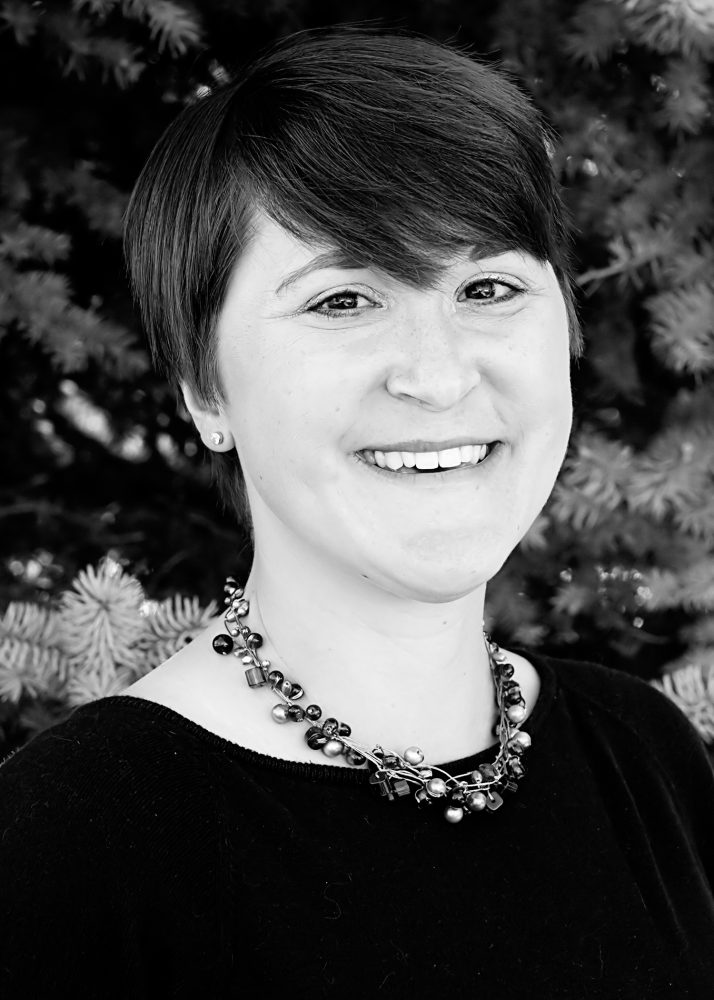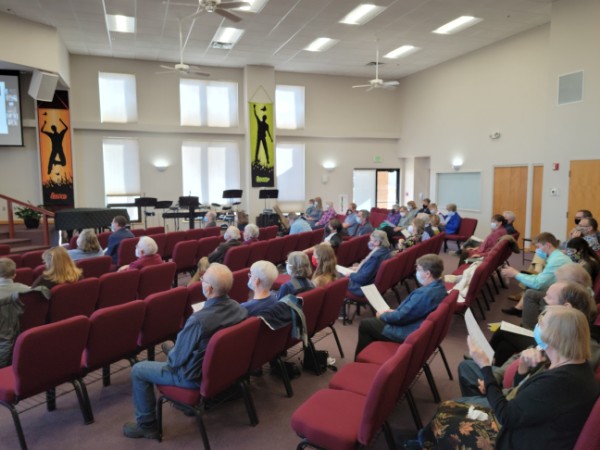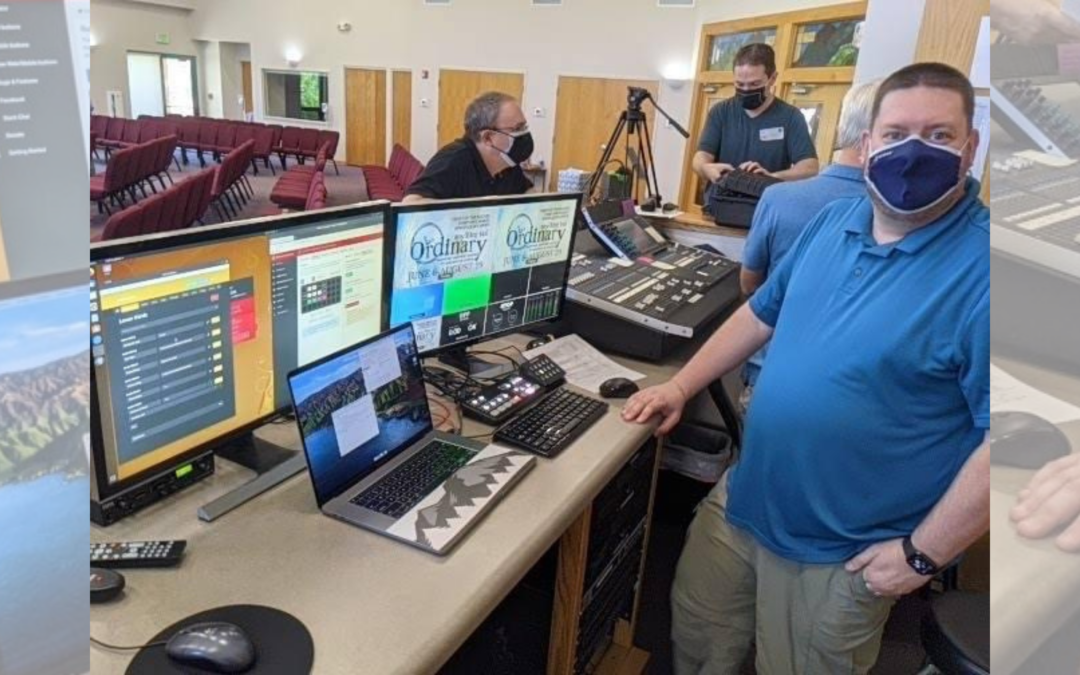Many churches struggle with adopting new technology.
Sometimes it’s due to a lack of employees or volunteers and other times, it’s due to hesitancy from elderly congregants who aren’t yet comfortable with technology that they’re unfamiliar with.
That wasn’t the case for Heart of the Rockies Christian Church (Disciples of Christ).

Tech team members. From left: Gordon Thayer, Richard Austin, Matt Wharton, Alan Anderson
In addition to a pastoral and program staff, this place of worship in Fort Collins, CO has an informal technology team comprised of three to five people. Before the pandemic struck, these self-described “nerds” regularly helped with running the soundboard or projector, but any kind of online options were left unexplored.
And while the community of faith is intergenerational, membership is, on average, middle-aged.
So what held Heart of the Rockies Christian Church back from providing both in-person and virtual worship?
“I don’t think that we had enough inertia because we’re a pretty small congregation,” admits Matt Wharton, a member of the tech team. “It’s not like we weren’t discussing it, but I think COVID-19 sort of gave us a proverbial kick in the pants.”
 Like many faith communities in March 2020, Heart of the Rockies scrambled to put together regular programming. The senior minister, Rev. Melissa St. Clair, looked to Matt and his colleagues for guidance, and from then on, this team has led the way.
Like many faith communities in March 2020, Heart of the Rockies scrambled to put together regular programming. The senior minister, Rev. Melissa St. Clair, looked to Matt and his colleagues for guidance, and from then on, this team has led the way.
That’s not to say that the first couple socially distanced worship services weren’t impromptu or shoestring. The tech team had someone in the sanctuary recording and trying to stream with a laptop. They experimented with Zoom calls. But eventually, the team realized that they had to be more intentional about their efforts.
“A good thing about us having to scramble was that it really opened more people’s eyes to how things could really be,” Matt recalls. “What would it look like if we live stream? Well, we had to find out.”
So Matt and others on his team started investing in some better hardware, such as a camera, and started recording on a schedule. Every Thursday afternoon, the team, worship leaders, and Rev. Melissa met up in the sanctuary, recorded her delivering the week’s sermon, then created an edited video for worship. This would then premiere on the church’s Facebook page and YouTube channel at the regular service times. This allowed viewers to watch the event “live” or after the fact. This was ideal during the height of the pandemic. This past spring, church leadership began to consider opening the doors again because of a desire among several members of the congregation to be back in the sanctuary. At the same time, leadership had received generous positive feedback regarding its online worship options from family, church members, and others who, for various reasons, hadn’t always been able to attend in person even before COVID. For these people, being able to participate in worship from the safety of their own homes enabled them to feel like part of the community, instead of isolated from it.
Pastor Melissa on camera as she and the tech team prepare for worship one Sunday.
“Not a week goes by that we don’t hear from folks who are very grateful for the opportunity to still be able to worship with us even when they can’t be here in person,” says Rev. Melissa. “It’s drawn the circle of how and with whom we worship considerably wider.”
So church staff wrestled with how they could do both in-person and streamed worship. It would require making some upgrades to their equipment and looking for funds to do so. This is when their Board Moderator, Stacy Ponselow, Property Team leader, Alan Anderson, and Executive Assistant, Sarah Ballard-Ramirez, put together an application for and received a much-needed technology grant from Disciples Church Extension Fund (DCEF). While the tech team had some high-quality projectors, they were connected to their computers with a VGA extension, an older interface standard. Their sound booth was also reliant on WiFi – ideal for downloading files off their OneDrive for the projector, but not ideal for streaming video. Funds from the grant enabled them to upgrade their projector connections from analog (VGA) to digital (HDMI) and purchase an ATEM switcher, which switches between different video inputs and applies graphics over existing video, such as song lyrics. It also enabled them to hire an electrician to run an Ethernet cable to their sound booth. They could now stream their worship services live to YouTube and Facebook.
“The grant was quite a boon,” remembers Matt. “We were trying to quickly fill a lot of needs, so it came through at the right time.”
Since then, Heart of the Rockies has started up its regular in-person Sunday worship, but the cameras continue to roll. Now Matt and his team stream out from their ATEM to a service called Restream, which allows them to not only broadcast their Sunday worship live to multiple social networks, but to tell Restream to feature the camera feed, put up slides, and add overlay graphics to the screen such as a speaker’s name.
As a result, Heart of the Rockies has become a successful hybrid church. There’s both regular in-person worship, even if services do look a little different, and a loyal online audience. Now every Sunday morning, people show up at church wearing masks, which they can remove if they must go up to the pulpit to speak. Initially, congregational singing was on pause (although that’s since been reintroduced) and while the children’s ministry is ongoing, kids stay in their seats for the children’s time. Having worship accessible online has allowed church members who cannot attend in-person for health reasons or who have relocated, including one family that moved to Germany for work, to feel like they’re still part of the community. Previously, worship attendees were from the local area.
“If I look at where we were at pre-COVID and where we’re at now, I think we’re in a stronger position because of the adaptations we’ve had to make and how we’ve risen as a group to deal with challenges,” beams Matt. “Opportunities like this grant helped us get there.”

Part of this strength is also the enthusiasm on the part of church members to both engage online, leaving comments on the live streams greeting viewers and adding prayer requests, and ask what else the church can do to enhance the online experience. Matt and his fellow volunteers are considering buying a PTZ camera, which is capable of remote directional and zoom control, and to use the existing camera for wide-angle shots of the congregation instead.
“If you ask me where we’ll be at two years from now, we’ll still be streaming and it’ll probably even be a bit slicker than it is today,” shares Matt. “And I think we’ll keep trying to grow. I don’t see us going back to how we did things before.”
Your congregation can also strengthen its online presence with technology funding from DCEF. Loans of up to US $50,000 are available for tangible equipment purchases and upgrades to streaming infrastructure. Contact your regional Building and Capital Services Advisor to apply.


